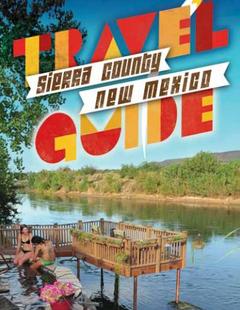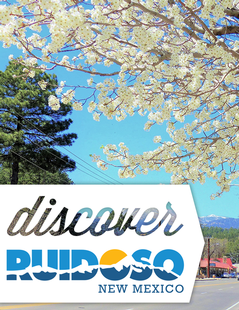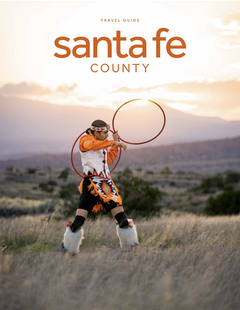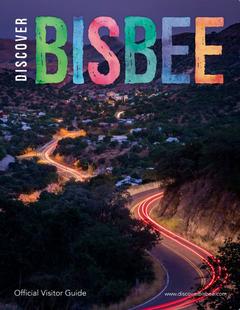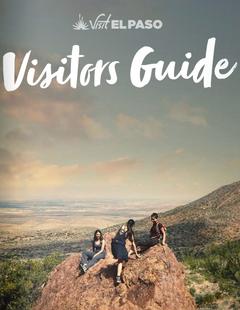Basics
- Length:
- 565 miles (909 km)
- Time:
- 12 hours to drive the entire Byway
Description
Explore the rich legacy of western expansion along the Santa Fe Trail as it enters Colorado from Kansas, traverses Colorado, and then enters New Mexico. This route transported many people across the West, and the resulting mesh of cultures and traditions will greet you at every turn. Participate in numerous colorful local festivals and visit museums honoring the many men and women who have lived and traveled in this area. Early Native Americans, military personnel, ranchers, miners, and railroad passengers all left their distinctive marks.
On clear days, sharp observers can discern the wagon-wheel ruts of the Santa Fe Trail winding their way across the prairie. The cultural legacies of this historic trade route, which saw its heaviest use between the 1820s and 1870s, remain just as vibrant today. The Byway, which comprises a 188-mile portion of the Santa Fe Trail, traverses one of the last strongholds of the nomadic Plains Indians and one of the first toeholds of Anglo-American pioneers who began homesteading along the Arkansas River in the 1860s. Many historic sites along the Trail were critical in the expansion of the West, such as Raton Pass, Bent's Old Fort, Cimarron, Fort Union, Wagon Mound, Point of Rocks, McNeese Crossing, Las Vegas, Pecos, and Santa Fe.
Today, travelers on the history-rich Santa Fe Trail enjoy the area for the variety of historic sites and museums that they may visit. Interpretive kiosks about the inhabitants of this great land are placed along the corridor of the Byway at historic sites such as stage stops, historic river crossings and wagon rut sites. Experience what life in the Old West was like at Bent's Old Fort, which offers year-round living history activities. Afterwards, take the Trails to Rails tour from Bent's Old Fort over treacherous Raton Pass and on into the bustling city of Santa Fe.
In addition to these historic sites, there are plenty of recreational opportunities for the entire family. Watchable wildlife areas are abundant, and fishing, camping, hunting, biking and hiking are all popular activities. John Martin Reservoir is the largest body of water in southeastern Colorado and provides a great deal of recreational opportunity for modern-day travelers of the Santa Fe Trail. Plan a weekend full of living history activities, such as the trail talks at Trinidad Lake State Park. Here, you can cook bread in a real Native American orno, take a self-guided tour on one of the park's hiking trails, or stop by the ranger station to borrow some wildlife-watching gear. Kits include a day pack, park viewing guide, binoculars, and a field guide to the park's watchable wildlife.
Comanche National Grasslands, maintained by the U.S. Forest Service, offers visitors a peek into the lives of the area's past inhabitants. Here you'll learn about everything from prehistoric creatures to Native American life. Picketwire Canyonlands Dinosaur Track site on the Comanche is the largest dinosaur track site in North America. Have an extreme experience on one of their guided four-wheel drive tours. Alternatively, you can take a self-guided tour of the canyon on the hiking and biking trail which follows the Purgatoire River to historic Rourke Ranch, also known as the Wineglass Ranch. Three generations of the Rourke family lived and worked on the ranch, ensuring its survival over a span of a hundred years.
Take a stroll through the El Corazon De Trinidad National Historic District of the Santa Fe Trail and enjoy the incredible architectural wonders of such greats as Bulgar and Rapp. The Old West town of Trinidad is nestled under a convergence of mountain ranges at the Colorado-New Mexico border. Doc Holiday gambled here, and Billy the Kid and Black Jack Ketchum's gangs visited the town far too often. Batt Masterson was even Town Marshall for a while. Stay and enjoy Western hospitality at quaint restaurants, shops, galleries, inns, and many museums. Be sure and stop at the Byway visitor center at the Trinidad History Museum in the Barglow building, where you'll learn about the families who built the kingdoms of ranching and coal on the Santa Fe Trail. Tour the historic Baca House and Bloom Mansion or the Santa Fe Trail Museum and stroll through the Victorian gardens of the complex, complete with a carriage house and courtyard.
The Santa Fe Trail offers a conglomeration of exciting cultures, regional history, and distinctive scenery. From hiking to festivals, wildlife watching to living history activities, the Byway promises hours of excitement found nowhere else.
Tourism Resources
Helpful Links
Tourism Resources
Points of Interest
Points of Interest Along The Way
Bent's Old Fort (CO)
William and Charles Bent and Ceran St. Vrain built the original Bent's Fort in 1833. This adobe fort was built to trade with the plains Indians and trappers in the area. Trading became so successful that additional forts were built to the north and south. This fort was one of the only major permanent white settlements along the Santa Fe Trail. Because of this, the fort provided many explorers, adventurers, and the US Army with supplies, repairs, food, and water. During the Mexican-American war in 1846, the fort was the staging area for Colonel Stephen Watts Kearny's "Army of the West." The fort was later abandoned in 1849 because of disease and various disasters. The fort was recreated using diaries, paintings, archaeological excavations, and original sketches.
Directions
Located on Hwy 194, seven miles east of La Junta, Co and 13 miles west of Las Animas, CO.
Bent's Old Fort (NM)
William and Charles Bent and Ceran St. Vrain built the original Bent's Fort in 1833. This adobe fort was built to trade with the plains Indians and trappers in the area. Trading became so successful that additional forts were built to the north and south. This fort was one of the only major permanent white settlements along the Santa Fe Trail. Because of this, the fort provided many explorers, adventurers, and the US Army with supplies, repairs, food, and water. During the Mexican-American war in 1846, the fort was the staging area for Colonel Stephen Watts Kearny's "Army of the West." The fort was later abandoned in 1849 because of disease and various disasters. The fort was recreated using diaries, paintings, archaeological excavations, and original sketches.
Directions
Located on Hwy 194, seven miles east of La Junta, Co and 13 miles west of Las Animas, CO.
Big Timbers Museum (CO)
The Big Timbers Museum houses many artifacts reflecting thehistory of the area. Outside of the museum, everyday tools ofhomesteaders, such as harnesses, sodbusters, corn shellers, a plow,a thresher, baler, and windmill. Inside the museum, there are manyartifacts also reflecting early life as a pioneer. There is ahandmade wedding dress of the 19th Century, a 1911 wringer washingmachine, the largest arrowhead collection in the country, anantique grand piano, and many more artifacts.
A distinctive addition to the museum is the Sacred Honorexhibit. This exhibit features personal effects of soldiers fromevery war America has fought. Items such as a Civil War sword,Civil War pictures, a WWI uniform, a Lamar resident's WWII prisonerof war papers, and many other interesting items are also located inthe museum. The museum holds Lamar's archives, and genealogydivision.
Directions
Located one mile north of Lamar on US Hwy 50.
Big Timbers Museum (NM)
The Big Timbers Museum houses many artifacts reflecting thehistory of the area. Outside of the museum, everyday tools ofhomesteaders, such as harnesses, sodbusters, corn shellers, a plow,a thresher, baler, and windmill. Inside the museum, there are manyartifacts also reflecting early life as a pioneer. There is ahandmade wedding dress of the 19th Century, a 1911 wringer washingmachine, the largest arrowhead collection in the country, anantique grand piano, and many more artifacts.
A distinctive addition to the museum is the Sacred Honorexhibit. This exhibit features personal effects of soldiers fromevery war America has fought. Items such as a Civil War sword,Civil War pictures, a WWI uniform, a Lamar resident's WWII prisonerof war papers, and many other interesting items are also located inthe museum. The museum holds Lamar's archives, and genealogydivision.
Directions
Located one mile north of Lamar on US Hwy 50.
Boggsville (CO)
Boggsville was founded in 1862, but even before that, earlypioneers used the area. Thomas O. Boggs arrived in the area in 1840and ran sheep through the area. In 1867, Kit Carson moved intoBoggsville. From 1863 until 1873, Boggsville was the center foragriculture, government, commerce, and culture. The area had astrong tradition of farming and ranching, and with nearby Fort LyonArmy Post, local farmers and ranchers had a place to sell theirgoods. With the development of Las Animas City across the ArkansasRiver, Boggsville did not grow much larger and remained a smallfarming/ranching community. Today visitors can visit the site andsee the buildings and experience what life was like in the earlyfarming/ranching communities of the area.
Directions
Las Animas, CO
Boggsville (NM)
Boggsville was founded in 1862, but even before that, earlypioneers used the area. Thomas O. Boggs arrived in the area in 1840and ran sheep through the area. In 1867, Kit Carson moved intoBoggsville. From 1863 until 1873, Boggsville was the center foragriculture, government, commerce, and culture. The area had astrong tradition of farming and ranching, and with nearby Fort LyonArmy Post, local farmers and ranchers had a place to sell theirgoods. With the development of Las Animas City across the ArkansasRiver, Boggsville did not grow much larger and remained a smallfarming/ranching community. Today visitors can visit the site andsee the buildings and experience what life was like in the earlyfarming/ranching communities of the area.
Directions
Las Animas, CO
Iron Springs Historic Area (CO)
Water was an important resource and commodity along the Santa Fe Trail. Because of this, the Iron Springs area was a crucial water stop for travelers along the Trail. Different routes were often taken to get to the springs. In addition to its use for water, the Iron Springs area was also used as a stagecoach stop. Visitors can still see trail ruts in some areas, just west of the parking lot.
Directions
From La Junta, Colorado drive southwest on Highway 350 for 27 miles. Turn left (south) at County Road 9 for 1 mile and then right (west) to the parking lot.
Iron Springs Historic Area (NM)
Water was an important resource and commodity along the Santa Fe Trail. Because of this, the Iron Springs area was a crucial water stop for travelers along the Trail. Different routes were often taken to get to the springs. In addition to its use for water, the Iron Springs area was also used as a stagecoach stop. Visitors can still see trail ruts in some areas, just west of the parking lot.
Directions
From La Junta, Colorado drive southwest on Highway 350 for 27 miles. Turn left (south) at County Road 9 for 1 mile and then right (west) to the parking lot.
Koshare Indian Museum & Kiva (CO)
The Koshare Indian Museum and Kiva hosts the Koshare dancers.Every summer and winter, the dancers perform authentic Plains andPueblo Indian dances for audiences. Koshares are not an Indiantribe, but are an integral part of Pueblo society. Differentartist's work and various artifacts collected from different areasis displayed at the museum. Various artifacts, such as baskets,pottery, weapons, jewelry, textiles, and clothing are all displayedat the museum.
Directions
La Junta, CO
Koshare Indian Museum & Kiva (NM)
The Koshare Indian Museum and Kiva hosts the Koshare dancers.Every summer and winter, the dancers perform authentic Plains andPueblo Indian dances for audiences. Koshares are not an Indiantribe, but are an integral part of Pueblo society. Differentartist's work and various artifacts collected from different areasis displayed at the museum. Various artifacts, such as baskets,pottery, weapons, jewelry, textiles, and clothing are all displayedat the museum.
Directions
La Junta, CO
Lamar Colorado Welcome Center (CO)
This welcome center is a renovated Santa Fe Railroad 1907 depot. This depot is still in use with daily Amtrak service between Chicago and Los Angeles. Lamar is a small town, with friendly folks, and is also the converging spot for three major U.S. Highways (U.S. 50, 287, and 385).
At the Lamar Welcome Center, along with the Madonna of the Trail Statue, visitors to the center can see an antique train engine. The Lamar Chamber of Commerce is also housed in this depot. Lamar has become an agricultural and industry center for the southeastern high plains, and is known as the "Goose Hunting Capital of the U.S."
Directions
Located in Lamar at 109 E. Beech Street.
Lamar Colorado Welcome Center (NM)
This welcome center is a renovated Santa Fe Railroad 1907 depot. This depot is still in use with daily Amtrak service between Chicago and Los Angeles. Lamar is a small town, with friendly folks, and is also the converging spot for three major U.S. Highways (U.S. 50, 287, and 385).
At the Lamar Welcome Center, along with the Madonna of the Trail Statue, visitors to the center can see an antique train engine. The Lamar Chamber of Commerce is also housed in this depot. Lamar has become an agricultural and industry center for the southeastern high plains, and is known as the "Goose Hunting Capital of the U.S."
Directions
Located in Lamar at 109 E. Beech Street.
Madonna of the Trail (CO)
There are 12 Madonna of the Trail statues located across the country. These statues are placed along the route of the National Old Trails highway. They commemorate the spirit and lives of pioneer women who sacrificed much to make the journey west. These statues depict a woman with a child in her arms and a child clinging to her skirt. One of these statues is located along the Santa Fe Scenic and Historic Byway in Colorado. Located in Lamar, the statue was dedicated in September 1928. The site where the statue stands was once a frequently visited way station along the Santa Fe Trail.
Directions
Located in Lamar at the corners of South Main and Beech near the Chamber of Commerce Office.
Madonna of the Trail (NM)
There are 12 Madonna of the Trail statues located across the country. These statues are placed along the route of the National Old Trails highway. They commemorate the spirit and lives of pioneer women who sacrificed much to make the journey west. These statues depict a woman with a child in her arms and a child clinging to her skirt. One of these statues is located along the Santa Fe Scenic and Historic Byway in Colorado. Located in Lamar, the statue was dedicated in September 1928. The site where the statue stands was once a frequently visited way station along the Santa Fe Trail.
Directions
Located in Lamar at the corners of South Main and Beech near the Chamber of Commerce Office.
Picket Wire Canyonlands (CO)
Picket Wire Canyonlands is a primitive area that has manyinteresting sites. Subsequent inhabitants of the area have leftvisible signs of their habitation. A Dinosaur tracksite extens for1/4 of a mile and consists of 1300 visible tracks. These trackswere left by two types of dinosaurs, the Allosaurus andBrontosaurs. They roamed the area millions of years ago, along amuddy shoreline of a large shallow lake.
Prehistoric cultures, whom archaeologists believe were nomadicpeople that were following migrating game, left rock art on some ofthe rock surfaces of the area. There has not been much researchdone on this area, thus little is known as regards to details aboutthe culture or how old the rock art is.
Between 1871 and 1889, Mexican pioneer began establishingsettlements in the area. Partial remains of the mission andcemetery are visible in the area. A few headstones can still beseen at the Delores Mission and Cemetery.
The Rourke Ranch, or Wineglass Ranch, was one of the mostsuccessful enterprises in southeast Colorado at the time it wassold in 1971. The original ranch founded by Eugene Rourke,comprised of 40 acres and was a cattle and horse ranch. This ranchsurvived for over a hundred years, and by the time it was sold, itencompassed 52,000 acres.
Directions
From La Junta, Colorado drive south on Highway 109 for 13 miles; turn right (west) on County Road 802 (Vogel Canyon Road) and continue for 8 miles. Turn left (south) on County Road 25 and continue for 6 miles to the Corral Parking Area.
Picket Wire Canyonlands (NM)
Picket Wire Canyonlands is a primitive area that has manyinteresting sites. Subsequent inhabitants of the area have leftvisible signs of their habitation. A Dinosaur tracksite extens for1/4 of a mile and consists of 1300 visible tracks. These trackswere left by two types of dinosaurs, the Allosaurus andBrontosaurs. They roamed the area millions of years ago, along amuddy shoreline of a large shallow lake.
Prehistoric cultures, whom archaeologists believe were nomadicpeople that were following migrating game, left rock art on some ofthe rock surfaces of the area. There has not been much researchdone on this area, thus little is known as regards to details aboutthe culture or how old the rock art is.
Between 1871 and 1889, Mexican pioneer began establishingsettlements in the area. Partial remains of the mission andcemetery are visible in the area. A few headstones can still beseen at the Delores Mission and Cemetery.
The Rourke Ranch, or Wineglass Ranch, was one of the mostsuccessful enterprises in southeast Colorado at the time it wassold in 1971. The original ranch founded by Eugene Rourke,comprised of 40 acres and was a cattle and horse ranch. This ranchsurvived for over a hundred years, and by the time it was sold, itencompassed 52,000 acres.
Directions
From La Junta, Colorado drive south on Highway 109 for 13 miles; turn right (west) on County Road 802 (Vogel Canyon Road) and continue for 8 miles. Turn left (south) on County Road 25 and continue for 6 miles to the Corral Parking Area.
Santa Fe Trail Marker (CO)
This marker was donated in 1906 by the Daughters of the American Revolution of the State of Colorado. The Santa Fe Trail was a major route for settlers heading west between 1822 and 1872.
Directions
Located on the west side of Hwy 50, about two miles north of the Chamber of Commerce Office.
Santa Fe Trail Marker (NM)
This marker was donated in 1906 by the Daughters of the American Revolution of the State of Colorado. The Santa Fe Trail was a major route for settlers heading west between 1822 and 1872.
Directions
Located on the west side of Hwy 50, about two miles north of the Chamber of Commerce Office.
Sierra Vista Overlook (CO)
The Santa Fe Trail was an important transportation route formany making their way westward and south. Travelers along the trailwould look for any known landmarks and set their sights on thatduring the long, arduous journey.
The Spanish Peaks were one such landmark, and these peaks comeinto view along the Sierra Vista Overlook. The area remains much asit did back then, and the views that you will be able to see aresimilar to those the early travelers saw. The changing horizon fromplains to mountains is visible along this trail, with the RockMountains rising in view to the west and the expansive prairie tothe east.
You can also follow a three-mile section of the Santa FeNational Historic Trail to Timpas Picnic Area. Look for the stoneposts which mark the trail, beginning from the shelter.
Directions
From La Junta, Colorado drive southwest on Hwy 350 for 13 miles. Turn right (north) at Highway 71 for 1/2 mile, then turn left (west) to the parking lot.
Sierra Vista Overlook (NM)
The Santa Fe Trail was an important transportation route formany making their way westward and south. Travelers along the trailwould look for any known landmarks and set their sights on thatduring the long, arduous journey.
The Spanish Peaks were one such landmark, and these peaks comeinto view along the Sierra Vista Overlook. The area remains much asit did back then, and the views that you will be able to see aresimilar to those the early travelers saw. The changing horizon fromplains to mountains is visible along this trail, with the RockMountains rising in view to the west and the expansive prairie tothe east.
You can also follow a three-mile section of the Santa FeNational Historic Trail to Timpas Picnic Area. Look for the stoneposts which mark the trail, beginning from the shelter.
Directions
From La Junta, Colorado drive southwest on Hwy 350 for 13 miles. Turn right (north) at Highway 71 for 1/2 mile, then turn left (west) to the parking lot.















